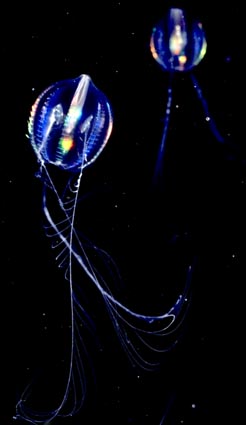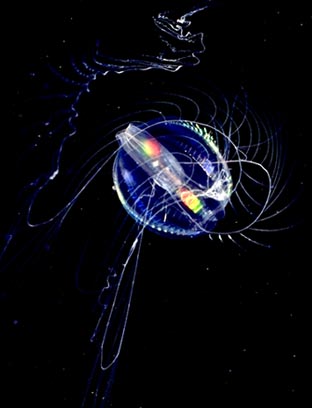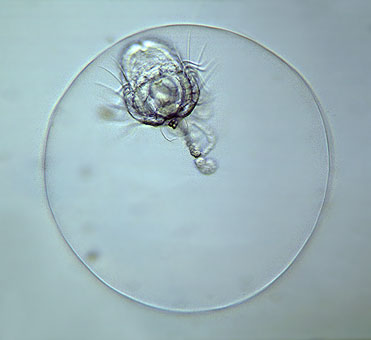

|
|

| Comb-jellies,
or sea gooseberries as they are also known, are one of the most beautiful
animals the ocean has to offer. They are not related to jellyfish but form
a group of their own: the Ctenophores.
The Ctenophore depicted in this article is Pleurobrachia pileus. It grows not much bigger than two centimetres. Therefore you can't really call it a microscopic organism. But it has many features that are interesting to study under the microscope. Ctenophores can be found in every ocean. Some even reach considerable sizes. |

| The sea gooseberries
can be easily collected. They often swim close to the surface. With a little
net or even a glass jar they can be scooped from the water. When put in
a glass container they can be kept alive for many days.
One of the most obvious characteristics are the locomotory organs, eight rows of comb-like structures that show irridescent colours when they reflect direct sunlight. They are real predators. With it's long tentacles
it captures food like copepods, the larvae of many organisms and other
small creatures floating in the plankton. It brings the food to it's mouth
which is shown in the pictures at the head of this article. Most textbooks
however show the organism with it's mouth facing downward. I always see
them with the tentacles pointing down.
|

One row of combs under the microscope.
